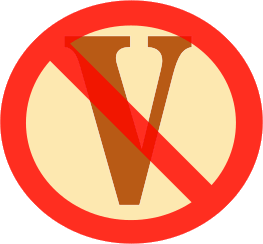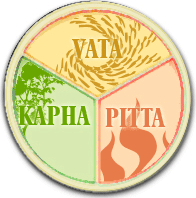WATER REGULATION HEALTH REMEDIES

|
The water regulation is called Ambu vaha srotas in Ayurveda. Categories in Blood and CirculationTemperature SignsWater RegulationCirculationHeartLymph / Blood PlasmaRed Blood CellsImmune-SystemLiver & GallbladderAround EyesEyesTongue CoatingTongue Surface / CracksTongue BodyPulseOverviewDon't know your body type? Take our free Dosha quiz!
TAKE THE QUIZ
     (5.00 out of 5 stars) 1 rating, 10 likes (5.00 out of 5 stars) 1 rating, 10 likes SAVE SYMPTOM SAVE SYMPTOMIt takes a strong digestion to get thirsty. Otherwise, water will feel heavy in the stomach. Vata individuals often forget to drink water, or fail to notice they are thirsty. Excess mucus and insufficient acids can also drown healthy thirst. Your sense... 20 likes  SAVE SYMPTOM SAVE SYMPTOMKapha people tend to store excess water. They avoid humidity and anything soggy, including soggy foods because it resembles the way they feel: congested, clammy and heavy. Since Kapha people crave heavy foods without sogginess, they are seduced by... 121 likes  SAVE SYMPTOM SAVE SYMPTOMThe skin is the cream of the blood plasma, reflecting it's properties. Thin, dry skin often reflects depletion or insufficient fat intake (Vata). Ghee and oil massage are useful for Vata type dry skin. In some case, dry skin is related to... 19 likes  SAVE SYMPTOM SAVE SYMPTOMClammy skin refers to skin that is wet, damp and sticky. Skin also usually feels cold to the touch. Most commonly, skin becomes clammy due to fluid accumulation in the extremities, often as a result of poor circulation.This can be due to thick plasma... 56 likes  SAVE SYMPTOM SAVE SYMPTOMWater retention could imply poor circulation or low kidney function. Poor circulation may be due to thick, sweet Kapha blood, a heart condition, low metabolism, or other factors. 33 likes  SAVE SYMPTOM SAVE SYMPTOMEdematic swelling can result from stagnant circulation or low osmotic pressure in the blood compared to cells. Circulation becomes stagnant in Kapha dosha when the blood is too thick and sweet. "Sweet" blood means blood that is rich in sugars, fats,...      (4.00 out of 5 stars) 2 ratings, 44 likes (4.00 out of 5 stars) 2 ratings, 44 likes SAVE SYMPTOM SAVE SYMPTOMEdematic swelling can result from stagnant circulation. Circulation becomes stagnant in Kapha dosha when the blood is too thick and sweet, or when veins are too dilated and relaxed. "Sweet" blood means blood that is rich in sugars, fats, proteins,... 11 likes  SAVE SYMPTOM SAVE SYMPTOMPuffy hands look enlarged and swollen. Hands generally become puffy due to lymphatic stagnation and sluggish circulation.Poor circulation often occurs as a result of a sedentary lifestyle and eating a diet in heavy, rich, sweet, and fried foods.... 29 likes  SAVE SYMPTOM SAVE SYMPTOMPuffy skin implies lymphatic stagnation, inflammation, and edema, overall a Kapha condition in Ayurveda and dampness in Chinese medicine. Possible causes include poor circulation, an allergen, and toxins. Kapha lymph is naturally thick & gooey. This... 40 likes  SAVE SYMPTOM SAVE SYMPTOMA puffy face is one that looks more swollen than normal. It is caused by sluggish circulation and lymphatic congestion. It can appear worse in the morning as lymph tends to stagnate overnight when you are immobile.Sluggish circulation often occurs as... 39 likes  SAVE SYMPTOM SAVE SYMPTOMNightime urination may be due to toxicity in the blood, which gets filtered by the kidneys. Alternatively, night-time urination can indicate diabetes, especially if the urine is cloudy or bubbly. 20 likes  SAVE SYMPTOM SAVE SYMPTOMGenerally, urine should be straw colored, or light yellow. Dark yellow urine implies the urine has a lower concentration of water than normal. This may be due to dehydration, a high sodium diet, electrolyte imbalance, poor circulation to the kidneys...      (5.00 out of 5 stars) 1 rating, 56 likes (5.00 out of 5 stars) 1 rating, 56 likes SAVE SYMPTOM SAVE SYMPTOMFrequent urination causes significant loss of electrolytes and dehydration. Dehydration creates digestive problems and constipation. The quantity of urine is related to many factors including diabetes and diuretic foods and pharmaceuticals. When there... 19 likes  SAVE SYMPTOM SAVE SYMPTOMSour sweat is a sign of a Pitta Kapha condition with ama (damp-heat in Chinese medicine). Circulation may be blocked or stagnant. This condition typically occurs alongside red-puffy skin and well developed muscles. 26 likes  SAVE SYMPTOM SAVE SYMPTOMSweating rarely may indicate chronic dehydration, electrolyte imbalance such as magnesium deficiency, or other factors. Drinking inadequate amounts of water, urinating or passing too much liquid in the feces will reduce the amount of sweating. The... 30 likes  SAVE SYMPTOM SAVE SYMPTOMSweating often may indicate congested fluids, or excess fat tissue. The backed up fluids can causes clamminess in hands or feet especially. A heat condition, a dry-heat condition, or irritating toxin can also cause the pores to open... 
AYURVEDIC FACE ASSESSMENT
Learn how to assess constitution by a person's face.
|
Join Joyful Belly.
Want our top Ayurvedic recipes and health tips?Subscribe to our free newsletter!












